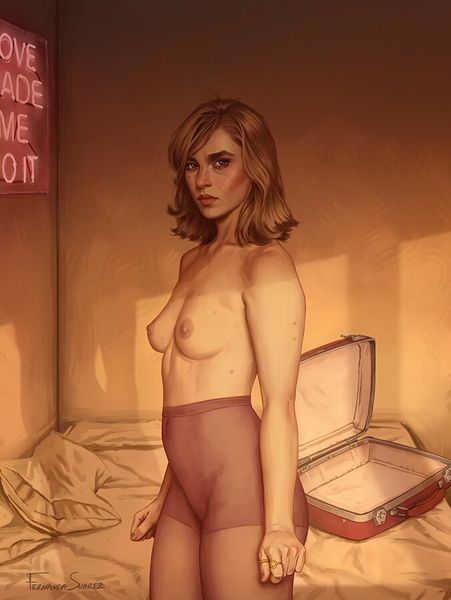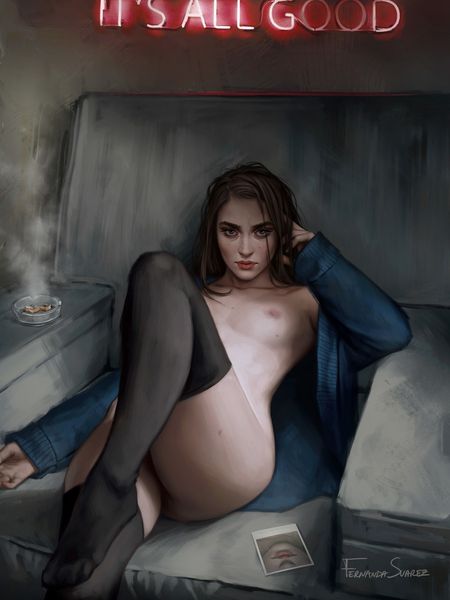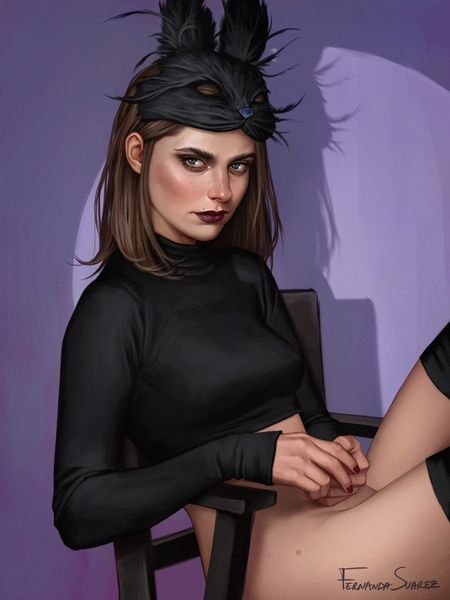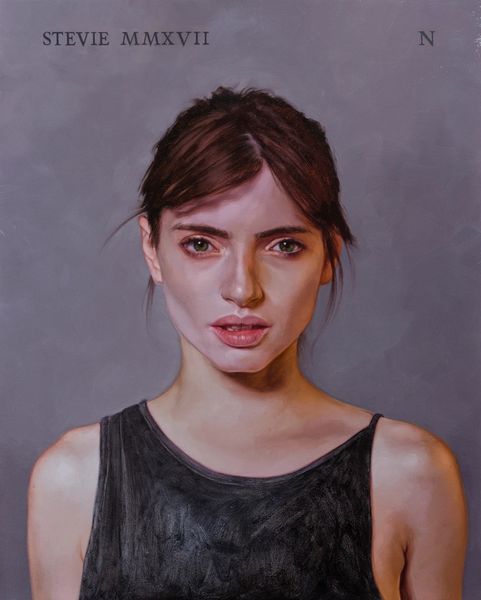
acrylic-paint
#
portrait
#
acrylic-paint
#
cityscape
#
modernism
Copyright: Modern Artists: Artvee
Editor: Here we have Fernanda Suarez's painting "Now these words are all air," crafted with acrylics. I find the overall image rather haunting, especially with the blurring of the background and focus on the subject’s gaze. What's your take on this work? Curator: For me, the material aspects of Suarez’s work are deeply interesting. The use of acrylics allows for that almost hyper-realistic sheen on the figure’s skin. How does that tactile quality play against the backdrop, and the titular "air"? Think about the social commentary: the means of production here reflect late-stage capitalism. Do you think she's saying something about the fleeting nature of language, perhaps in our digitally saturated world? Editor: I can see that, with the choice of medium impacting the image. It also makes me think about how she depicts a cityscape, yet focuses intently on a portrait. So is she making a point of contrasting interiority with an urban environment through those visual elements? Curator: Precisely! The cityscape rendered immaterial, in neon, consumed and re-presented. And consider her technique. That blurring… is it merely aesthetic, or a purposeful commentary on how the city—our world, really—blurs and distorts lived experience? Think of how acrylic paints, initially developed for industrial use, become elevated to this fine art practice. Editor: It’s intriguing how a seemingly simple portrait can open up these wider discussions about materiality, labor, and our social landscape. The focus shifts away from the individual and towards something bigger. Curator: Exactly. By examining Suarez’s method and material choices, we expose deeper meanings related to consumption, production, and our place in this cityscape. Editor: Thanks! That helps me look past just the face to the processes at play. Curator: And that’s how the “air” of words becomes grounded in the materiality of art.
Comments
No comments
Be the first to comment and join the conversation on the ultimate creative platform.













